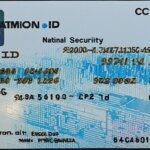Table of Contents
Fiat currency, also known as government-issued currency, is a type of currency that is not backed by a physical commodity such as gold or silver. Its value is determined by the relationship between supply and demand and the stability of the issuing government. Unlike commodity money, which has intrinsic value, fiat currency derives its value from people’s trust and acceptance.
Most modern paper currencies, including the U.S. dollar and the euro, are examples of fiat currencies. They are widely accepted as a means of payment and are used in everyday transactions.
Unlike digital currencies like Bitcoin, which operate independently of any government, fiat currencies are issued and regulated by central banks. These banks have the authority to control the supply of money, set interest rates, and influence the stability of the economy.
What is Fiat Money?
Fiat money refers to a government-issued currency that is not backed by a physical commodity such as gold or silver. Instead, its value is determined by factors like the relationship between supply and demand and the stability of the issuing government.
One of the key advantages of fiat money is that it gives central banks significant control over the economy. These central banks can actively manage the money supply by printing additional currency or withdrawing it from circulation, thereby influencing interest rates and credit availability.
However, there is a potential danger associated with fiat money – the risk of hyperinflation. When governments have too much control over the printing of money and they print it excessively, it can lead to a loss of confidence in the currency and, consequently, a rapid increase in prices. Zimbabwe experienced this firsthand in the early 2000s when the government printed money at an alarming rate, resulting in hyperinflation and the depreciation of their currency.
In summary, fiat money is a government-issued currency not backed by a commodity, providing central banks with control over the economy. While this control can be advantageous, the unchecked printing of money can pose a significant risk of hyperinflation.
Key points:
- Fiat money is a government-issued currency not backed by a physical commodity.
- Central banks can control the economy through managing the money supply.
- An excessive printing of fiat money can lead to hyperinflation.
The History of Fiat Money
The concept of fiat money dates back to the use of paper currency in China during the 7th century. However, in more recent history, various countries, including the United States, have utilized the gold standard, linking their currency to the value of gold.
Under the gold standard, each unit of currency was convertible into a fixed amount of gold. This system provided stability and reassurance to holders of the currency, as it was backed by a physical commodity with intrinsic value.
However, the United States made a significant shift in its monetary system with the Emergency Banking Act of 1933. In an effort to address the impacts of the Great Depression, the act allowed the suspension of the gold standard and gave the U.S. government more control over the value of the U.S. dollar.
“Since then, the U.S. dollar has been considered fiat money and is legal tender for all debts, public and private. It is backed by the ‘full faith and credit’ of the U.S. government.”
This change marked the transformation of the U.S. dollar into a fiat currency, supported by the full faith and credit of the U.S. government rather than the backing of a physical commodity like gold. As legal tender, the U.S. dollar is accepted for all types of debts.
Advantages and Disadvantages of Fiat Money
Fiat money offers several advantages that contribute to its widespread use in many economies. One of the key advantages is the control it grants to central banks over the economy. With fiat money, central banks can effectively manage variables such as the supply of credit and interest rates. This control allows governments to respond swiftly to economic fluctuations and implement measures to guide the economy in the desired direction.
Another advantage of fiat money is its cost-efficiency. Unlike commodity-backed currencies that require the extraction, refinement, and storage of precious metals, fiat money can be produced at a relatively low cost. The absence of the need for physical backing materials makes fiat money more accessible and less resource-intensive to manufacture, leading to cost savings for governments.
Fiat money also provides governments with flexibility in the management of their currency. They can adjust money supply and implement monetary policies tailored to their economic needs and goals. This flexibility allows governments to respond dynamically to changing market conditions and adapt their strategies accordingly.
However, alongside its advantages, fiat money does present some disadvantages. One notable downside is the risk of inflation. When governments excessively print money, the increased supply can outpace the growth of goods and services, leading to a decrease in purchasing power and a rise in prices. Careful management of the money supply is essential to mitigate this risk and maintain a stable economy.
Additionally, the unlimited supply of fiat money creates an opportunity for the formation of bubbles within the economy. The availability of readily accessible money can lead to speculative investment behavior, inflating asset prices beyond their intrinsic value. Governments must monitor and regulate the financial markets to prevent the formation of unsustainable bubbles that could ultimately result in economic instability.
FAQ
What is fiat currency?
Fiat currency is a type of government-issued currency that is not backed by a physical commodity like gold or silver. Its value is derived from the relationship between supply and demand and the stability of the government that issued it.
What is fiat money?
Fiat money is a government-issued currency that is not backed by a commodity like gold. Its value is determined by the relationship between supply and demand and the stability of the issuing government.
How does fiat money give central banks greater control over the economy?
Fiat money gives central banks greater control over the economy because they can control how much money is printed. This allows them to manage variables such as credit supply and interest rates.
What are the advantages of fiat money?
Fiat money is cost-efficient to produce compared to a commodity-backed currency. It also provides governments with flexibility in managing their currency.
What are the disadvantages of fiat money?
One of the disadvantages of fiat money is the risk of inflation if too much money is printed. There is also the potential for the creation of bubbles due to the unlimited supply of fiat money.
What is the history of fiat money?
The history of fiat money can be traced back to the use of paper currency in China during the 7th century. In more recent history, many countries, including the United States, used to back their currency with gold. However, the U.S. government ended the convertibility of the U.S. dollar to gold in 1971.












